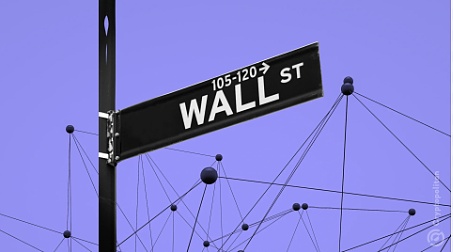RWA, or real-world assets, is attracting the attention of Wall Street capital driven by crypto tokenization.
Bitkoala commentator said: The so-called RWA tokenization refers to the process of representing assets such as bonds, stocks, artworks and even office building ownership shares in the form of digital tokens on the blockchain. Anyone who owns the token owns the asset, and it can be easily transferred by simply transferring ownership from one crypto wallet to another.
According to the forecasts of some of the largest financial institutions and business consulting firms in the Tren Finance research report, the RWA tokenization industry may grow more than 50 times by 2030. Most firms predict that the RWA space could be worth between $4 trillion and $30 trillion. If the industry achieves the median forecast of around $10 trillion, it would be worth more than 54 times what it is today. As the industry matures, the RWA space could begin to encompass more of the global financial markets, potentially reshaping financial markets, including the way people invest, trade and hold assets.

Wall Street tycoons have begun to take action
In March this year, BlackRock Inc., the world's largest asset management company, announced the launch of its first tokenized mutual fund, the BlackRock USD Institutional Digital Liquidity Fund. It is reported that Ondo Finance has announced that it will invest with BlackRock and Securitize to Sky (formerly Sky) to create a digital liquidity fund. lang="EN-US">MakerDAO)'s Spark Tokenization Competition submitted a proposal to introduce Ondo's short-term U.S. Treasury bonds OUSG, which will provide returns consistent with short-term U.S. Treasury bonds, with an asset management scale of approximately $229 million.
In early October, Visa announced the launch of the tokenized asset platform VTAP (Visa Tokenized Asset Platform), which aims to help banks issue fiat-based tokens. The VTAP solution is available on the Visa developer platform to participating financial institution partners. It is reported that Spanish bank BBVA plans to launch a stablecoin business with Visa next year. Francisco Maroto, head of digital assets and blockchain at BBVA, said the bank is currently in the sandbox stage of Visa's new plan. Subsequently, US financial services giant State Street is exploring tokenized bonds and money market funds. State Street Bank Chief Product Officer Donna Milrod said the company is currently studying these two projects and is working to establish tokenized collateral that can be used as a change or initial margin for transactions. Currently, companies must sell their money market funds to generate trading margin. By digitizing these funds and using crypto tokens as collateral, the need for redemption can be completely eliminated. Not only that, asset management company WisdomTree also announced that users can directly consume funds from the WisdomTree Government Money Market Digital Fund (WTGXX) through their Visa debit cards. Will Peck, head of digital assets at WisdomTree, said in a statement: "By connecting yield assets directly to our spending functionality, users can fund their everyday purchases within the app, investing in WTGXX with the potential to earn yield every day until the investment is sold to pay for spending." In addition, Kadena also announced the hiring of former DCG executive and Thiel Foundation CEO Alana Ackerman as its chief advisor. Additionally, Chief Business Officer Annelise Osborne highlighted the firm’s commitment to RWAs and tokenization, stating that the firm is “in talks with major asset managers to launch a broad range of institutional tokenized products.” Why is Wall Street “suddenly” paying attention to the real-world asset tokenization market?
In fact, Wall Street's attention to the real-world asset tokenization market mainly stems from the following aspects:
1.Improve asset liquidity and transaction efficiency:
Fragmentation and democratization: Splitting traditional large assets into smaller tokens can lower the investment threshold and allow more investors to participate.
24/7Trading: Blockchain-based token transactions are not restricted by time and region, which improves asset liquidity.
Reduce transaction costs: The use of decentralized exchanges and smart contracts can reduce intermediaries and reduce transaction costs.
2. Expand financing channels:
Asset securitization: Tokenizing traditional assets can be used as collateral for financing, broadening the financing channels of enterprises.
Issuing digital bonds: Enterprises can directly raise funds from the capital market by issuing digital bonds, thereby improving financing efficiency.
3. Optimize asset management:
Improve transparency: Blockchain technology can record the ownership and transaction history of assets, improving the transparency of asset management.
Automated processes: Smart contracts can automate many processes of asset management, reduce human errors and improve efficiency.
4. Innovative financial products:
Derivatives: Various financial products such as options and futures can be derived from tokens to enrich the financial market.
Index funds: Index funds that track specific asset portfolios can be created to provide diversified investment options.
5. Meet the future financial trends:
Metaverse: In the Metaverse, digital assets will play an important role, and the tokenization of real-world assets is a key step.
Digital economy: With the rapid development of the digital economy, the demand for digital assets will continue to grow.
Motivations of major Wall Street players:
Investment banks: Explore new business growth points, provide tokenization services, and participate in the trading and clearing of digital assets.
Asset management companies: Convert traditional assets into digital assets, provide customers with more investment options, and optimize asset management.
Exchanges: Expand business scope, provide digital asset trading services, and attract more users.
Potential risks and challenges:
Regulatory uncertainty: Asset tokenization is an emerging field, regulatory policies are not yet perfect, and there are certain legal risks.
Technical risks: Blockchain technology is still developing, and there are security vulnerabilities and technical risks.
Market volatility: The digital asset market is highly volatile, and there is a high investment risk.

What impact will it have if Wall Street financial institutions enter the real-world asset tokenization market?
The participation of Wall Street financial institutions will have a profound and wide-ranging impact on the real-world asset tokenization market. The following is an in-depth analysis of this phenomenon:
1. Market size and depth
Accelerate market maturity: Wall Street's strong capital and expertise will accelerate the maturity of the tokenization market and promote more assets to be on the chain.
Improve market liquidity: The influx of a large amount of institutional funds will significantly increase the trading volume and liquidity of tokenized assets and reduce market friction.
Expand market participants: Wall Street's brand effect and channel advantages will attract more traditional investors to enter the market and expand the scope of market participants.
2. Product innovation and service upgrade
Enrich product categories: Wall Street's financial engineering capabilities will give birth to more innovative tokenized products, such as securitization, derivatives, etc., to meet diverse investment needs.
Improve service system: Wall Street will provide more professional and comprehensive financial services, including asset evaluation, risk management, transaction settlement, etc., to enhance investor experience.
Promote industry standardization: Wall Street’s participation will promote the formulation and unification of industry standards, reduce market risks, and improve market transparency.
3. Improve the regulatory system
Accelerate the implementation of supervision: Wall Street’s entry will prompt regulators to speed up the formulation of relevant regulations and provide a clear regulatory framework for the tokenization market.
Improve regulatory efficiency: Wall Street’s compliance requirements will force tokenization platforms and project parties to improve their compliance levels and reduce regulatory costs.
Promote international regulatory cooperation: Wall Street’s global influence will promote regulatory agencies in various countries to strengthen cooperation and form unified regulatory standards.
4. Financial system reform
Improve the efficiency of the financial system: The 24-hour trading and automated clearing of tokenized assets will greatly improve the efficiency of the financial system.
Reduce financing costs: Enterprises can raise funds through tokenized assets, reduce financing costs, and broaden financing channels.
Reshape the asset management model: Tokenized assets will change the traditional asset management model and promote the asset management industry to develop in the direction of digitalization and intelligence.
5. Potential risks and challenges
Increased market volatility: The influx of a large amount of funds may lead to increased market volatility and increase investment risks.
Regulatory uncertainty: The constant changes in regulatory policies may bring uncertainty to the market.
Systemic risks: The deep integration of tokenized assets and the traditional financial system may bring new systemic risks.
Information asymmetry: There may be information asymmetry between small investors and institutional investors, exacerbating market unfairness.
Summary
The participation of Wall Street financial institutions will undoubtedly inject new vitality into the real-world asset tokenization market and promote the accelerated development of the industry. However, at the same time, it also brings many challenges and risks. Regulators, industry participants and investors need to work together to build a safe, transparent and efficient tokenization market ecosystem.
 JinseFinance
JinseFinance
 JinseFinance
JinseFinance Cheng Yuan
Cheng Yuan JinseFinance
JinseFinance Huang Bo
Huang Bo Huang Bo
Huang Bo JinseFinance
JinseFinance Beincrypto
Beincrypto Cointelegraph
Cointelegraph Cointelegraph
Cointelegraph Cointelegraph
Cointelegraph